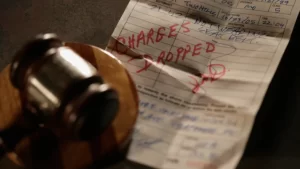Who Paid the Largest Criminal Fine in History?
Paying fines for breaking laws or regulations is a common occurrence for both individuals and organizations. However, some organizations have been fined astronomical amounts that dwarf even the largest personal fines. Determining who has paid the biggest criminal fine in history comes down to looking at the largest fines levied against corporate entities.
The Largest Corporate Criminal Fines
Several massive criminal fines levied against major corporations stand out when looking at the highest amounts in history. Here are some of the most notable and largest criminal fines paid:
BP – $4.5 Billion for the Deepwater Horizon Oil Spill
In 2012, BP agreed to plead guilty to 14 criminal charges related to the 2010 Deepwater Horizon oil rig explosion in the Gulf of Mexico. The company paid $4.5 billion in fines related to the environmental disaster and cleanup efforts, making this the largest criminal fine in U.S. history. The amount was finalized after BP pled guilty to 11 counts of manslaughter for the 11 workers killed in the initial rig explosion.
Petrobras – $1.78 Billion for Corruption Scandal
Brazilian state-run oil company Petrobras paid out a staggering $1.78 billion fine in 2018 after a widespread corruption investigation. Prosecutors found Petrobras executives accepted billions in bribes from construction firms to award inflated contracts. The fine settled charges against Petrobras for covering up the scandal and failing to provide accurate financial statements.
Pfizer – $2.3 Billion for False Marketing
In 2009, American pharmaceutical giant Pfizer agreed to a $2.3 billion settlement for misbranding the painkiller Bextra. This included a $1.2 billion criminal fine for illegally promoting Bextra for off-label uses not approved by the FDA. It was the largest health care fraud fine at the time.
BNP Paribas – $8.9 Billion for Violating Sanctions
French banking institution BNP Paribas holds the record for the largest-ever criminal fine paid by a bank. In 2015, BNP agreed to plead guilty to violating U.S. sanctions by processing transactions for blacklisted countries like Sudan and Iran. The company paid almost $9 billion in penalties.
GlaxoSmithKline – $3 Billion for Unlawful Drug Promotion
British pharmaceutical company GlaxoSmithKline (GSK) paid $3 billion in 2012 to resolve criminal and civil liabilities regarding unlawful promotion of prescription drugs and failure to report safety data. It was the largest health care fraud settlement in U.S. history. GSK pled guilty to promoting drugs like Paxil, Wellbutrin, and Avandia for unapproved uses.
The Largest Criminal Fine of All Time
While the previous examples show fines in the billion-dollar range, one company has the notorious honor of paying the largest criminal fine in history across all industries and jurisdictions globally.
Siemens AG – $1.6 Billion for Bribery and Corruption
In 2008, German conglomerate Siemens AG agreed to pay an unprecedented $1.6 billion fine for bribery and corruption charges following an investigation across multiple countries. Prosecutors found Siemens routinely engaged in bribing government officials around the world to win infrastructure contracts. The staggering fine remains the largest criminal fine ever levied against any single entity worldwide.
Key Factors Behind the Enormous Siemens Fine
Siemens’ multi-billion dollar fine for international bribery ultimately boiled down to a perfect storm of factors that allowed the rampant corruption to be exposed and heavily prosecuted.
Widespread Bribery Across Multiple Business Units and Countries
The Siemens bribery scheme was remarkably far-reaching, involving multiple company divisions spanning technologies like telecommunications, power generation, medical devices, and more. It also occurred across a wide range of countries worldwide. These factors allowed the fine amount to accumulate quickly.
Lasting Over Many Years
Prosecutors determined the bribery and falsification of corporate financial statements had been going on at Siemens for nearly a decade. Such a long-running period of persistent rule-breaking allowed fines and penalties to stack up over time.
Weak Internal Controls Against Corruption
Investigations painted a clear picture of Siemens lacking sufficient internal controls and oversight to halt bribery. Weak governance and auditing allowed the corruption to flourish. Higher fines tend to result from deficiencies in self-policing and prevention.
Intentional Disregard of Red Flags
Perhaps most damning was evidence that Siemens compliance staff and senior executives repeatedly turned a blind eye to clear red flags. The culture of ignoring clear warning signs reflected poor managerial oversight warranting harsher punishment.
Coordinated Transnational Investigation
Unlike prior cases limited to one country, Siemens faced a coordinated investigation by authorities from across the globe. This multinational scrutiny harmonized penalties rather than allowing fines to be siloed by country.
Breaking Down the Unprecedented Siemens Fine
The $1.6 billion Siemens fine was not just one lump sum, but rather a culmination of financial penalties levied by various entities. Here is how the record total fine broke down:
- $800 million to the German government.
- $450 million to the World Bank Group’s anticorruption unit.
- $350 million to the U.S. Securities and Exchange Commission.
- An additional $569 million for other fines, disgorgements, and legal fees.
Repercussions Beyond the Fine Itself
For Siemens, the blockbuster fine was just one element of the heavy toll exacted by the scandal. The firm suffered a range of secondary impacts.
Plunge in Stock Price and Market Value
News of investigations and charges sent Siemens’ stock price tumbling, at one point cutting its market capitalization by nearly $20 billion. This steep equity selloff reflected serious investor concern over the corruption revelations and potential fallout.
Individual Convictions and Prison Sentences
Several high-level Siemens executives were personally convicted of criminal charges related to the scandal. Multiple former executives received prison sentences for their role.
Tarnished Business Reputation
The bribery scandal and resulting record-setting fine caused immense damage to Siemens’ reputation with stakeholders like customers and regulators. This loss of prestige hampered the firm’s ability to compete for international contracts.
Costly Compliance Overhaul
Siemens needed to implement an expensive company-wide overhaul of compliance processes and training to identify and prevent future corruption. These remediation expenses added to the burden from the fines themselves.
Could an Even Larger Criminal Fine Happen?
Given the unprecedented scale of the Siemens case, it makes the $1.6 billion amount seem unbeatable. However, experts caution that even larger fines could certainly occur – especially as business globalization and regulation continue increasing.
Globalization Expanding Scope and Scrutiny
As more companies operate internationally across numerous countries, the jurisdictional reach of prosecuting authorities also increases. This raises the ceiling for potential punishments.
Coordinated Investigations Growing More Common
Regulators are cooperating more often across borders, pooling resources to tackle complex investigations. Combined, synchronized penalties can eclipse fines levied by a single country.
More Industries Subject to Stringent Oversight
Governments continue expanding and strengthening regulatory oversight into sectors beyond conventional targets like banking and pharmaceuticals.
Evolving Understanding of Indirect Liabilities
Prosecutors now impose greater indirect liabilities on companies for actions of individual employees. This widens the basis for large fines.
Impact on the Business World
The enormous fine imposed on Siemens sent shockwaves throughout the global business community. It reflected a new reality and regulatory climate companies would need to navigate.
Strong Warning on Corruption Crackdowns
The severe penalties delivered an unambiguous warning – engagement in bribery would be met with punishment on an unprecedented scale. This put multinationals on notice to curb corrupt practices.
GreaterSCRUTINY of Global Companies
Regulators signaled increased scrutiny and lower tolerance for rule-breaking by globe-spanning corporations and banks. This necessitated stronger compliance.
Reassessed Political Risks in Developing Markets
Executives needed to re-evaluate assumptions about risks in emerging markets. Assumed lax attitudes toward bribery were no guarantee.
Spurred Industry-Wide Anti-Bribery Efforts
Competitors afraid of facing similar prosecutions proactively strengthened their own anti-bribery programs. This improved standards across entire industries.
Lasting Significance of the Siemens Case
The sheer magnitude of penalties imposed on Siemens cemented its status as a landmark case signaling an aggressive new era of enforcement. Even over a decade later, the case remains the touchstone for criminal fines.
Several key reasons underpin the durable significance of the punishment meted out to Siemens:
- It established bribery and corruption as priorities for international regulators.
- The fine demonstrated coordinated global prosecution was possible.
- It made the business costs of unethical practices tangible.
- It provided a benchmark for penalties where ignorance is no excuse.
- It elevated standards for anti-corruption compliance programs.
- It opened the door for even larger fines in the future.
Conclusion
In review, Siemens AG’s $1.6 billion fine in 2008 for bribery and corruption stands unrivaled as the largest criminal fine ever levied. The German conglomerate engaged in widespread, systematic bribery across multiple business units and countries over many years. Global coordinated investigation and prosecution combined with poor internal oversight inflated penalties to unprecedented levels. The resulting huge fine reflected a new era of harsher enforcement and delivered a strong warning to companies worldwide. With globalization and cooperation between international regulators only increasing, experts caution that even larger sanctions could occur in the future as prosecutors crack down on corporate wrongdoing. However, for now the Siemens case remains the pinnacle of criminal fines.
Frequently Asked Questions
Who previously held the record for the largest criminal fine before Siemens?
The previous record-holder for the largest criminal fine was an $800 million penalty against Italian dairy company Parmalat in 1996 for financial fraud. Siemens’ $1.6 billion fine in 2008 more than doubled this prior record amount.
What business practices got Siemens into trouble?
Siemens engaged in systematic and widespread bribery of government officials across the globe to win infrastructure contracts. The company also falsified financial statements to cover up and facilitate the bribery.
How did regulators coordinate the Siemens investigation?
Regulators from multiple countries formed a joint task force to share findings and coordinate penalties. This collaboration allowed comprehensive scrutiny and synchronized fines.
Which Siemens divisions were involved in bribery?
Various Siemens units spanning telecom, power, medical, and other technologies participated in bribery schemes tailored to winning contracts in their respective industries.
Could the record Siemens fine be exceeded?
Experts believe even higher fines are possible in the future as business globalization expands the jurisdictional reach of regulators. Coordinated transnational prosecution can also potentially multiply penalties.






